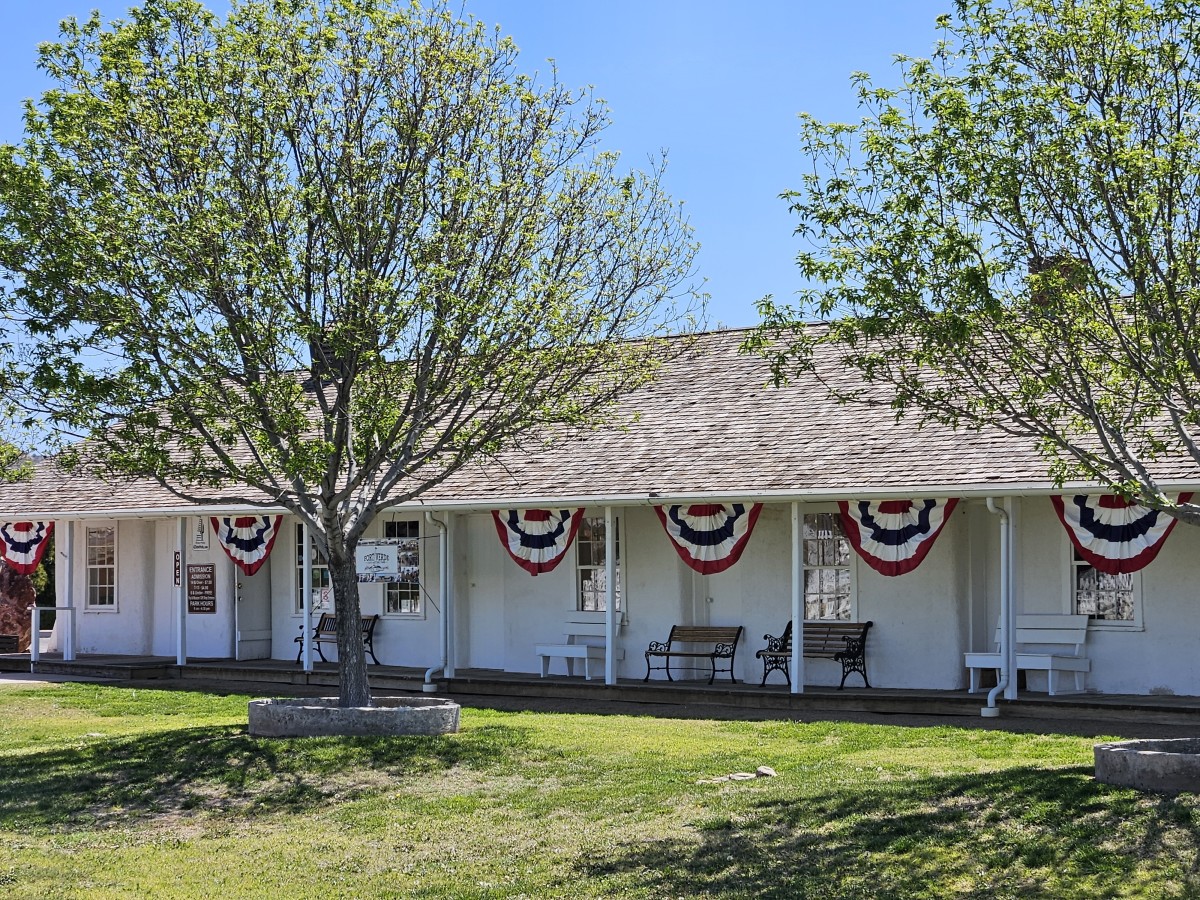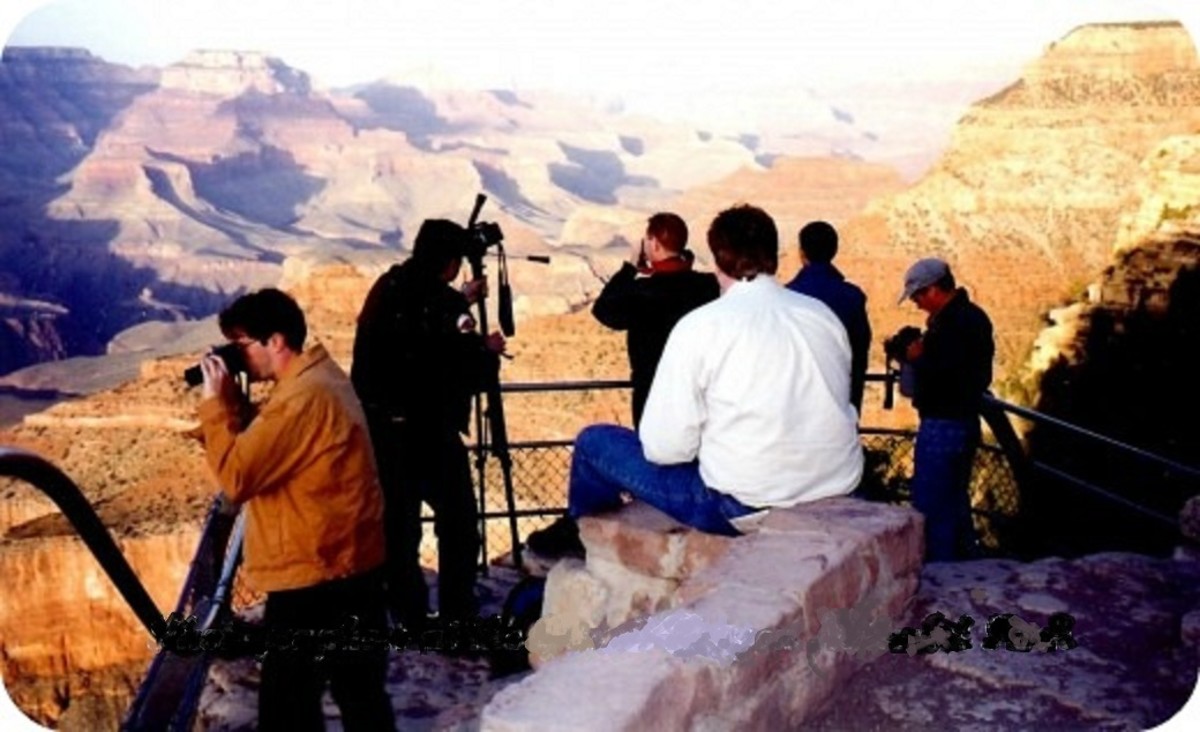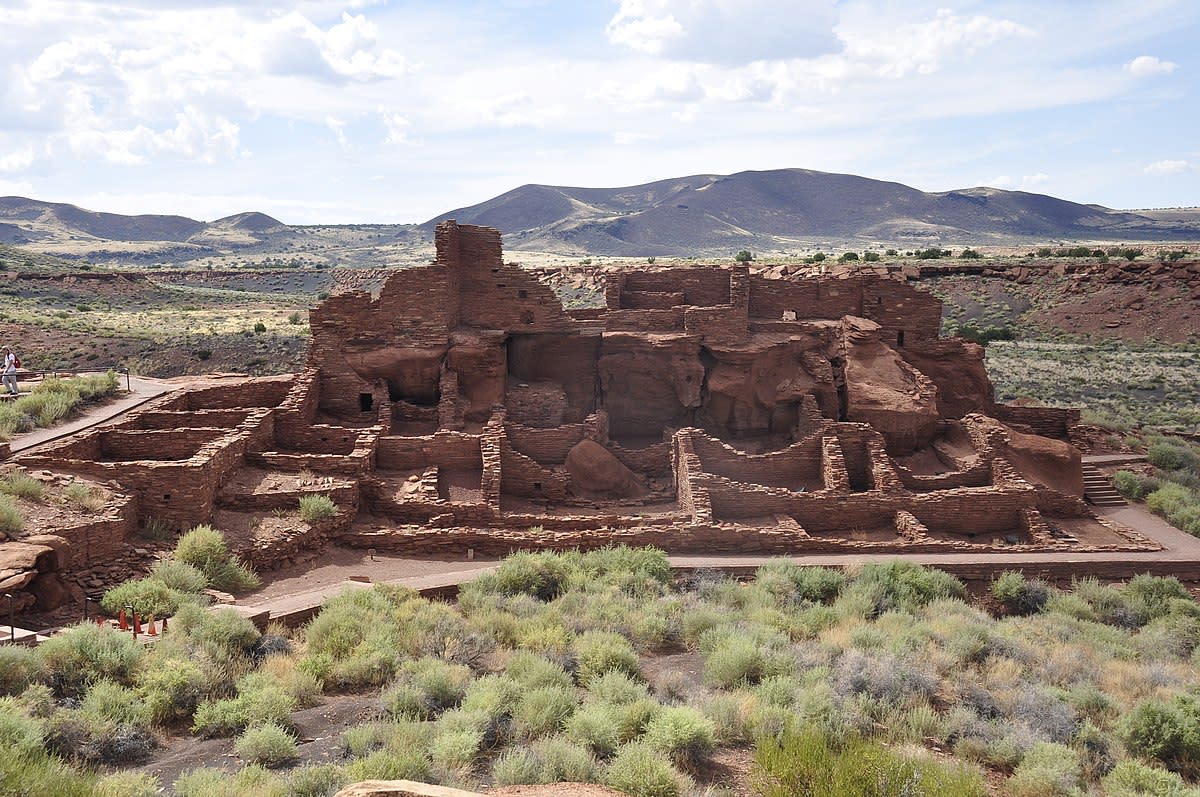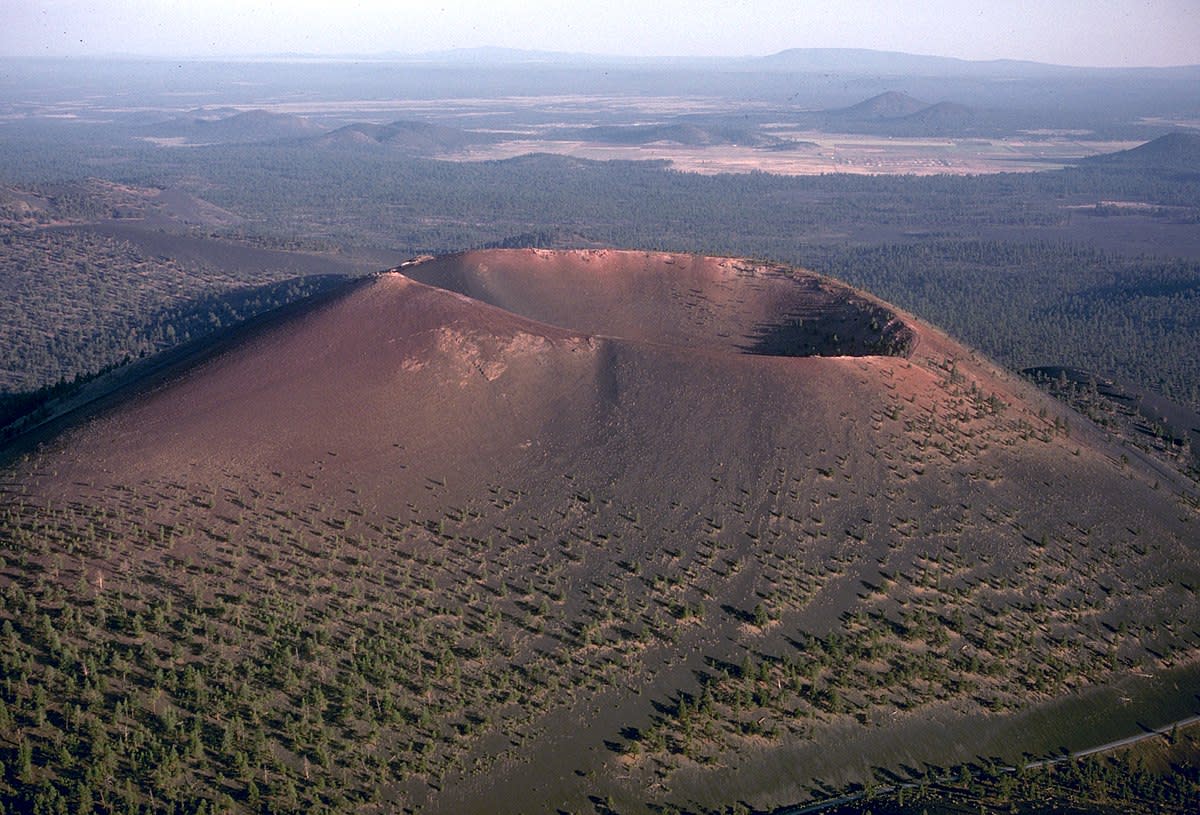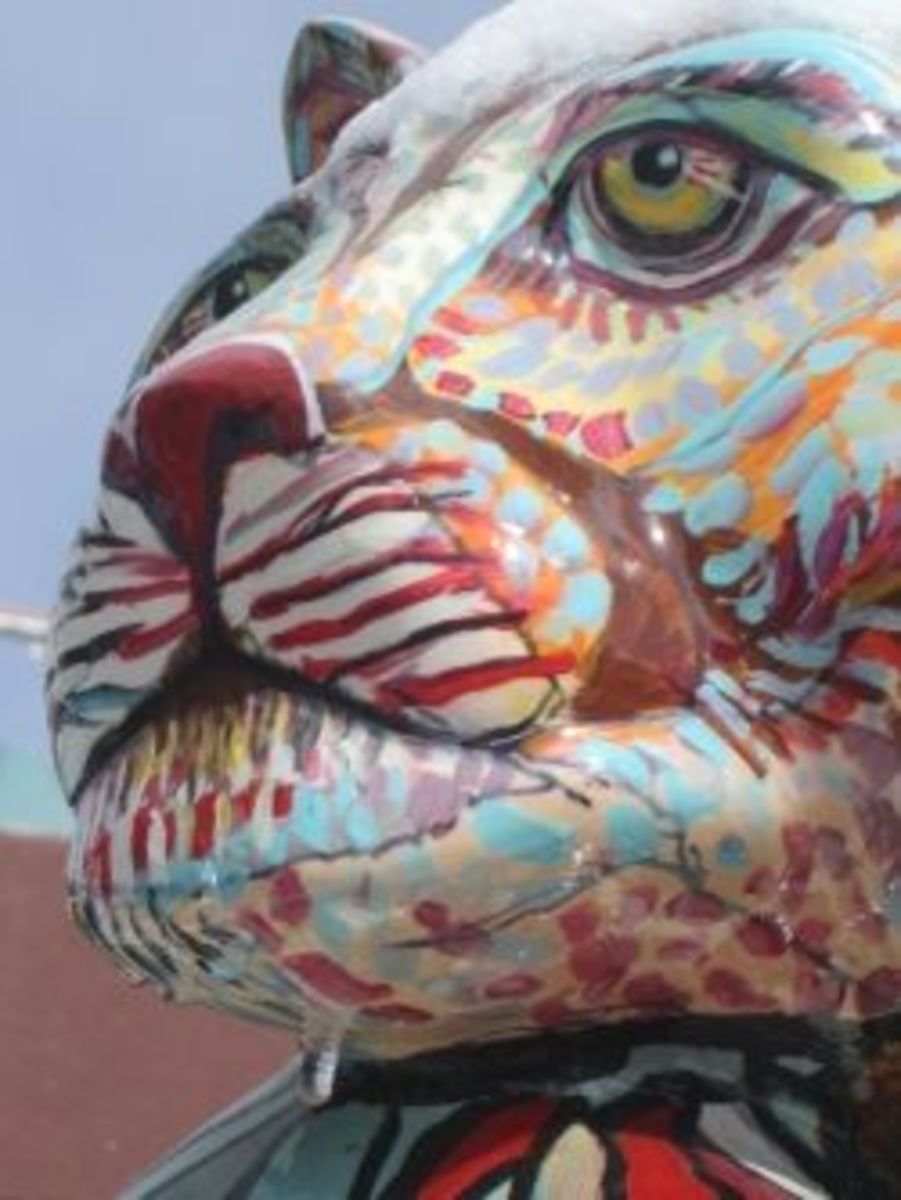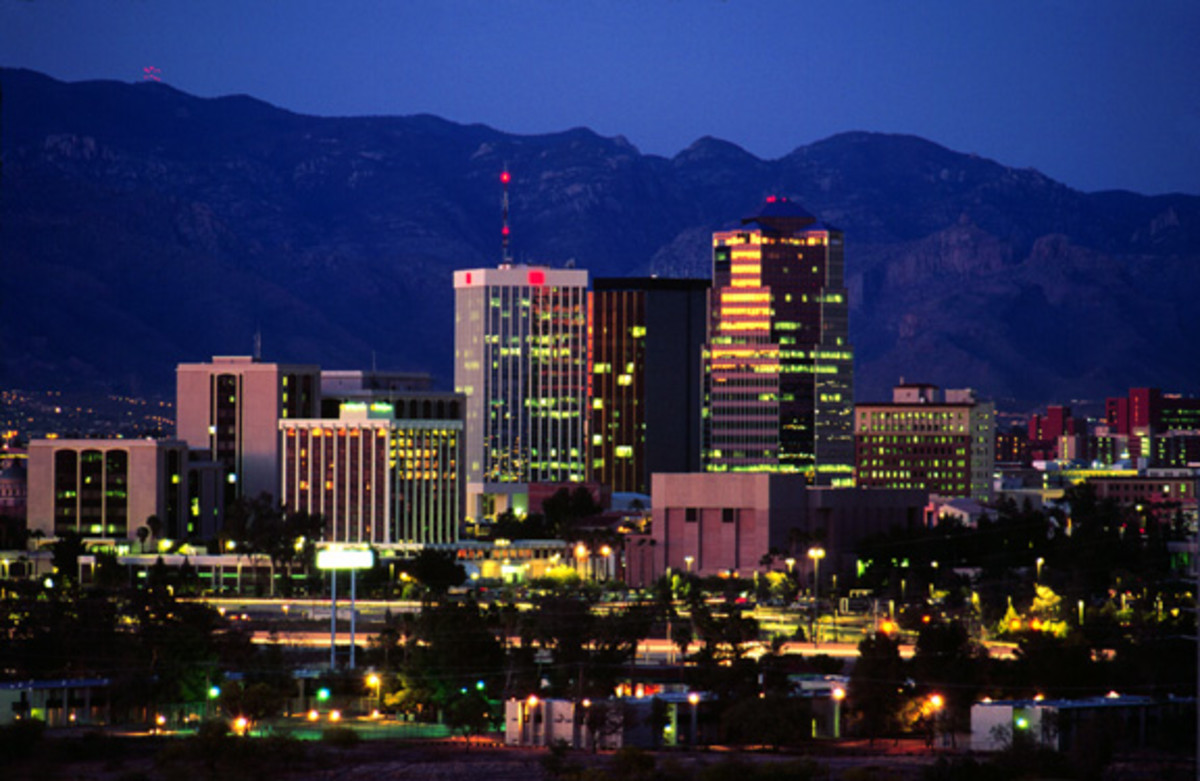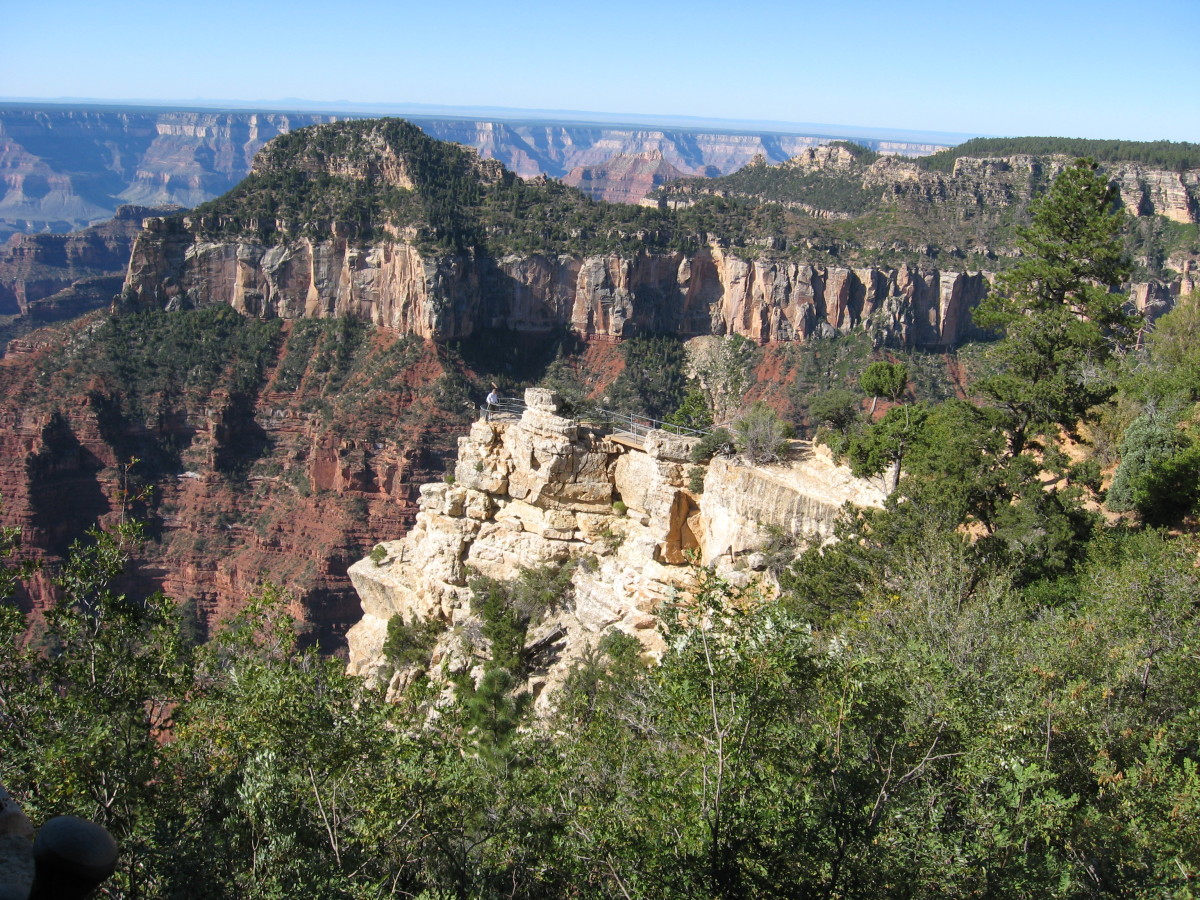- HubPages»
- Travel and Places»
- Visiting North America»
- United States
Visiting Arizona's Montezuma Castle
A Great Site Despite a Historically Inaccurate Name
Travelers driving along Interstate 17 (I-17) between Phoenix and Flagstaff Arizona pass signs for exits for Montezuma Castle and Montezuma Well. These are located in the Verde Valley near the city of Camp Verde and are about three-quarters of the way between Phoenix and Flagstaff.
Despite the strange name, Montezuma Castle, which is about a 5 or 6 minute detour for travelers driving this route, is a famous pre-Columbian historic Indian ruin.
Built in an alcove about 100 feet up the side of a cliff, the 800 year old, intact structure requires no imagination to see what it looked like.
For traveling to or from the Grand Canyon and parts north, especially those with young children, Montezuma Castle is a great place to leave the highway for an hour or less to stretch and take in a spectacular pre-historic site.
Montezuma Castle
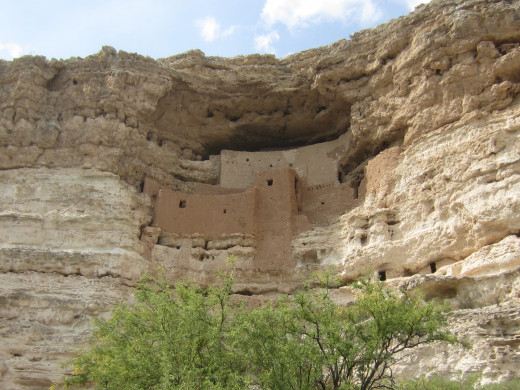
Some Castle History
The name Montezuma on these two landmarks can be confusing since Montezuma II was the Aztec Emperor who ruled over much of modern day Mexico before being defeated and his empire conquered by a Spanish force under the command of the conquistador Hernán Cortés in the first quarter of the sixteenth century.
Visitor Info
- Montezuma Castle is open from 8 AM to 5 PM every day except Christmas
- Arizona is in the Mountain Time Zone but does not observe daylight savings time which means that, during the summer the time is the same as Pacific Daylight Time
- Admission fee is $5 per adult 16 years and older, children under 16 admitted free (see fee section above for alternative fee options)
- Visitor Center and most of walkway are wheelchair accessible (picnic tables are not wheelchair accessible)
- Modern restrooms, a bookstore, small museum and service desk available in Visitor Center
- No food service available but there are picnic tables for those who bring their own food
- Dogs are allowed but must be kept on leash no longer than 6 feet and owners must clean up their mess
- Walk way around the park is 1/3 mile in length and is level and paved.
- Total area of park is 1.316 sq miles (3.408 sq km)
However, when Americans began moving into the newly acquired Southwest following the Mexican War of 1846-48 they assumed that large structures, like Montezuma Castle, were built by the Aztecs.
A that time people, including historians, did not realize there were some advanced Native American civilizations, like the Southern Sinagua who built Montezuma Castle, living in what is now Arizona, Texas and New Mexico.
Montezuma Castle is an 800 year old pueblo style structure built by the Sinagua Native American culture. The Sinagua began transitioning from a primitive hunter gather nomadic way of life to a more settled farming and trading culture beginning about 600 AD. Sometime in the twelfth century they began building Montezuma Castle and similar pueblo style structures in the surrounding area.
The Sinagua culture reached its zenith over the next couple of centuries. During this high period the Sinagua were located in an area crisscrossed with trade routes that extended from parts of the Great Plains and Texas south and west to the Pacific and northwestern Mexico (some speculate that the trade extended the Aztecs in Mexico and possibly the Mayans in Central America).
Then,beginning sometime in the fourteenth century the Sinagua culture and civilization, as well as the trade began to decline. By the early 1400s, some 75 years before the arrival of Columbus, Montezuma Castle and other Sinagua settlements were abandoned and the Sinagua culture vanished.
For a more complete history of Montezuma Castle see my Hub, Montezuma Castle - History of a Pre-Columbian Cliff Dwelling, in which I focus on the history of Montezuma Castle.
Prehistoric Hunters in Verde Valley
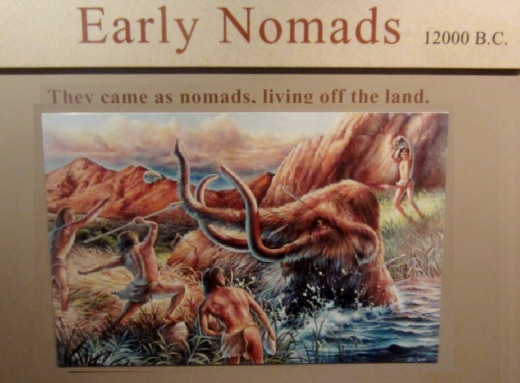
A Quick and Interesting Break When Traveling to or From the Grand Canyon
Montezuma Castle is not only one of the better pre-Columbian pueblo style ruins, it is also very easy to get to.
In fact for travelers heading to or returning from the Grand Canyon or other popular travel spots in the north of Arizona, a visit to Montezuma Castle can be as short as an hour.
Take exit 289 east off Interstate 17 and follow the signs approximately one-half mile along W. Middle Verde Rd. to Montezuma Castle Rd.
You will pass through two traffic circles or roundabouts and the Yavapai Apache Cliff Castle Casino and Hotel will be on the hill to your right just before you reach the Montezuma Castle Rd.
Montezuma Castle Rd. takes you straight to the parking lot of the Montezuma Castle National Monument.
Directions to Montezuma Castle From I-17
Take exit 289 east from I-17 onto W. Middle Verde Rd. Follow signs about 1/2 mile then turn left onto Montezuma Castle Rd. to Park entrence
Southwestern Pre-Columbian Ruins
Have You Visited Montezuma Castle or other Southwestern Pueblos and other Indian Ruins?
Visitor Center at the Monument
The parking lot for Montezuma Castle is adjacent to the Visitor Center which includes a bookstore selling books and mementos and a small museum along with an information desk where visitors can pay their fee or purchase an annual, senior or other type of pass.
Modern restroom facilities are located just outside the visitor center.
A large wall mural extends along the wall of the museum area. On it is a graphic timeline with pictures and text telling the history of the area from the first human arrival some 14,000 years ago down to the present.
In addition to drawings and photos of events that took place where the castle stands are drawings and descriptions of major historic events that occurred at the same time in Europe and other parts of the world.
Included in this graphic timeline is a picture of President Theodore Roosevelt signing the 1906 proclamation designating Montezuma Castle as one of the first three national monuments created under the Antiquities Act of 1906.
There is also a mural depicting the interior of a typical room in the castle as well as some artifacts found on the site.
Visitor Center
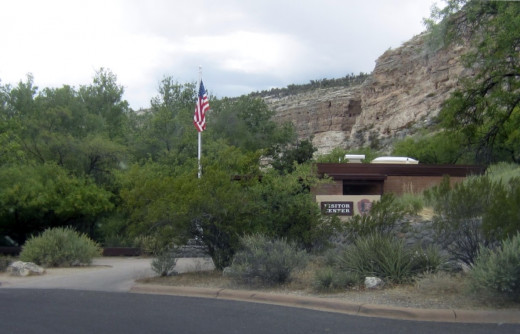
Exploring Montezuma Castle National Monument
It is a short distance from the front entrance next to the parking lot to the exit into the monument area. Unless you detour through the museum or bookstore areas you can go from paying your fee to the monument with a few short steps.
Tips for Your Visit
Arizona is located in America's desert Southwest and can pose some unique challenge for travelers such as:
- Hats and sunscreen should be used when outdoors as the sun can be intense
- Rattlesnakes are not uncommon so be aware of your environment and keep and eye on young children and pets. Avoid irrational fear as rattlesnakes fear people and do their best to avoid humans.
- Don't become dehydrated - be sure to travel with and drink enough water. Drinking fountains are available at the site and nearby retail outlets have bottled water and ice for coolers.
The public area of the monument consists of a1/3 mile walkway that takes you along the base of the cliff on which the Castle stands to a small section of the creek and back to the visitor center. The castle itself, which sits in an alcove just below the top of the cliff can be seen from most parts of the walkway.
Entrance to the castle itself is no longer available to the general public. Following the opening of I-17 in 1951 the number of people visiting Montezuma Castle increased greatly causing concern that constant foot traffic would weaken and collapse the ancient floors. Since 1951 access to the castle has been limited to researchers.
Prior to 1951 the Park Service had ladders up the face of the cliff for people to climb and tour the inside of the castle. When the Park Service decided to limit access to the castle they created a diorama displaying a cut-away of the castle displaying the rooms and inhabitants in them.
The diorama is located along the creek side of the walkway opposite the castle. Pressing a button on the diorama activates a recording and light. As the light shines on each room a recording describes the room and the inhabitants activities in the room.
Montezuma Castle Diorama

The walkway is a wide, paved and level sidewalk. It is an easy walk for anyone including those with toddlers in strollers, people in wheelchairs or others who need or prefer a smooth and level surface when walking.
Signs along the walk describe the history, geology, plants and life in Montezuma Castle.
While only one-third of a mile in length, the walk is both enjoyable and educational. The walk provides numerous excellent views of the castle as well as many photo opportunities.
As you reach the end of the walk directly in front of the cliff you will encounter some ruins at ground level. In addition to the structure in the alcove near the top of the cliff the Sinagua Indians, who settled and built this site, also constructed a much larger structure a few yards to the west of the present castle.
Ruins of Second Structure at Montezuma Castle
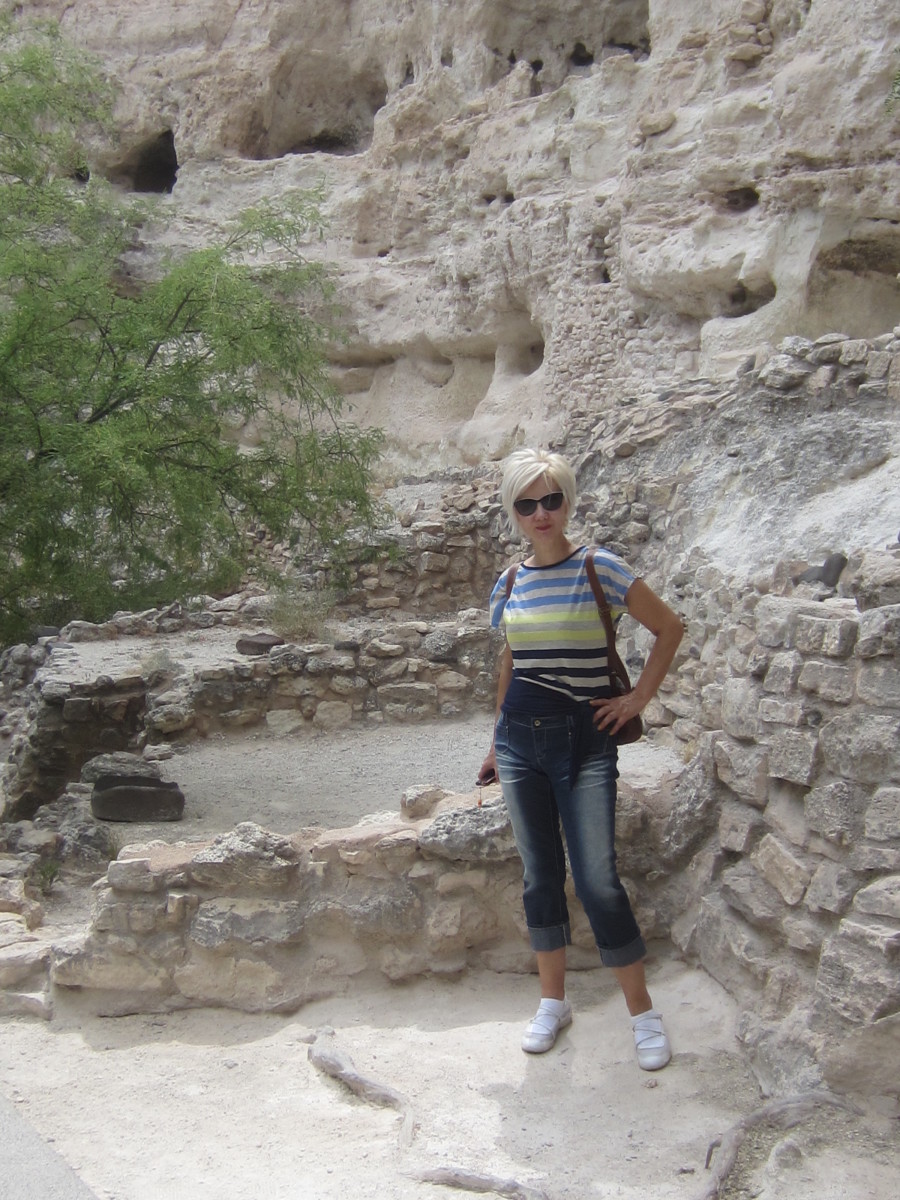
This larger structure, which was built against the face of the cliff and was 5 stories high with about 45 rooms, has been named Castle A, by archeologists.
Castle A

Built and used during the same time as the castle in the alcove, Castle A appears to have been destroyed by fire some time prior to the abandonment of the area by the Sinagua. Lack of evidence of war or fighting suggests that the fire was due either to an accident or natural causes such as lightning.
Visitors today can see the outline of some of the rooms at the ground level of Castle A as well as post holes in the side of the cliff where the beams supporting the different stories were inserted.
There are more good views of the castle from across the grassy, tree shaded area between the creek side and cliff side of the walk.
While there is no restaurant or food available at Montezuma Castle, there are some picnic tables in the grassy area where you can sit and have a picnic with food you bring. There are also a number of restaurants and fast food place in nearby Camp Verde.
Beaver Creek

Other Amenities
Montezuma Castle National Monument is a small Federal recreation area whose purpose is to preserve the 800 year old pueblo style structure for future generations.
In addition to the relatively small area where visitors can stroll around the grounds viewing the castle and creek the only amenities available at the site for tourists are the picnic tables outside along with the visitor's center with its bookstore, small museum, service desk, restrooms and drinking fountains.
There is no hiking (other than the one-third mile paved walkway), camping, boating, swimming or fishing (there is no access to Beaver Creek).
However, for those looking for more things to do and see there are a number of options nearby.
The Yavapai Apache tribe's Cliff Castle Casino located next to I-17 interchange 289, the closest point to get on or off I-17 for Montezuma Castle, is a resort that includes both hotel and restaurant.
Camp Verde, located about five miles south of Montezuma Castle, has a number of hotels, restaurants, gas stations and stores. The somewhat large municipalities of Cottonwood and Sedona offer more in terms of food, lodging, shopping and other activities a somewhat further but still less than an hour's drive away.
The larger city of Flagstaff is a little over 50 minutes away (54 miles) on I-17 and the Grand Canyon a little over an additional hour's drive past Flagstaff.
There are also numerous things to see and do in the area around Montezuma Castle. These include:
- Montezuma Well (another national monument but admission is free)
Montezuma Well
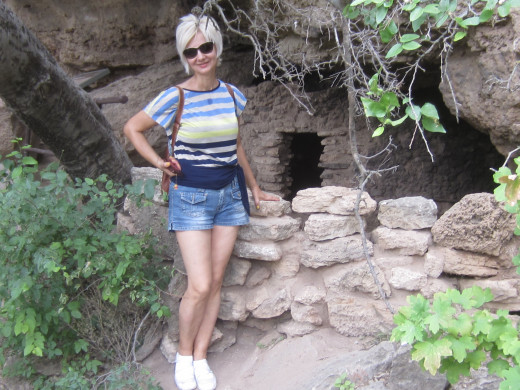
- Ft. Verde State Park
- Tuzigoot National Monument - another pueblo style structure built by Sinagua during same era as Montezuma Castle but located on a hill with access to the pueblo itself
- Sedona - a city surrounded by red sandstone cliffs
- Chapel of the Holy Cross with its spectacular location and architecture
- Red Rock State Park
- Oak Creek Canyon
- Numerous other scenic, historic, educational and just plain fun places to visit.
For those planning to visit the American Southwest with its numerous Federal recreation areas, I have included some additional information on the various passes and how they can many travelers money on their visits.
Chapel of the Holy Cross

More Information on Federal Recreation Area Fee Options
Montezuma Castle is a national monument managed by the U.S. National Park Service and entrance fees are charged. Parking, however, is free.
The fee to enter Montezuma Castle National Monument is $5 for adults 16 years old and older. Once purchased the pass is good (at this site only) for re-admission for 7 consecutive days from purchase
This fee is payable inside the Visitors Center unless you have one of the various special passes that allow you to enter Federal recreation areas managed by:
- National Park Service
- Bureau of Land Management (BLM)
- Bureau of Reclamation
- Fish and Wildlife Service
- Department of Agriculture Forest Service
The table below lists the more common passes and how to obtain them. In some cases purchasing a pass may be less expensive especially if you are planning to visit a number of the numerous other national parks, monuments, forests, etc. scattered throughout the Southwest.
Trees in Canyon Below Montezuma Castle
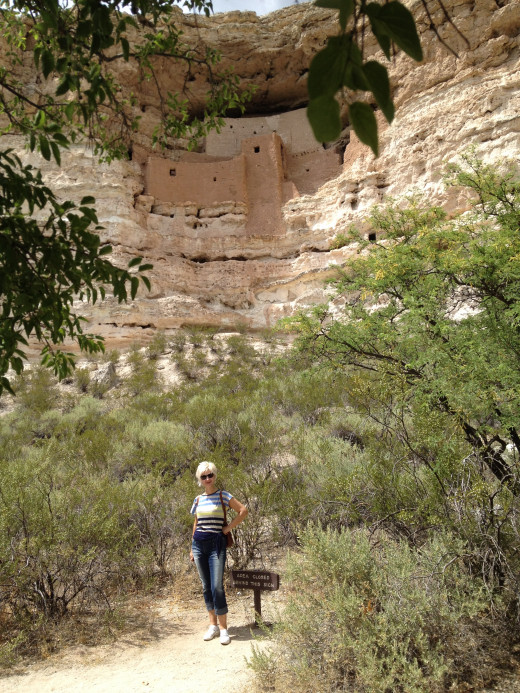
Types of Passes Available for Entrance to Recreation Areas Managed by the Federal Government
Type of Pass
| Who Qualifies
| Fee
|
|---|---|---|
Montezuma Castle/Tuzigoot Pass
| Allows entrance for one person to both Montezuma Castle & Tuzigoot for 7 days
| $8
|
Annual Pass - Good for 1 Year
| Entrance to over 2,000 sites for 1 non-commercial vehicle or owner + 3 adults in 1 car. Pass can be purchased by anyone and is NOT LIMITED to U.S. citizens and legal residents.
| $80
|
Military Annual Pass
| Available to Active Duty Members and dependents of the Armed Forces as well as most current members of Reserves and National Guard and dependents.
| Free (Military ID Required)
|
Access Pass
| Lifetime pass available to U.S. Citizens and Legal Residents with a permanent disability. Disability and citizenship/residency documentation required to obtain pass. At sites with per vehicle charge provides free access to 1 non-commercial vehicle & passengers; at per-person sites allows free admission to holder and up to 3 other adults in the car (only owner has to be disabled).
| Free if obtained at sites with the pass or $10 by mail.
|
Senior Pass
| Life time free entry to U.S citizens or legal residents who are 62 or older. At sites with per vehicle charge provides free access to 1 non-commercial vehicle & passengers; at per-person sites allows free admission to holder and up to 3 other adults in the car (only owner has to be 62 or older). Owner must show both pass and acceptable ID photo verifying age to use psss for admission.
| $10 if purchased at site or $20 by mail. Good for life but must purchase again if lost.
|
Volunteer Pass
| A 12 month free pass for those who volunteer a total of 250 hours at recreational sites managed by Federal Government. New 12 month pass issued following additional 250 hours of service. At sites with per vehicle charge provides free access to 1 non-commercial vehicle & passengers; at per-person sites allows free admission to holder and up to 3 other adults in the car. Holder must show both pass and acceptable photo ID for admission to sites.
| 250 Hours of Volunteer Service for 12 month pass
|
A Farming Community

While the passes listed above cover the admissions fees to Federally managed recreation areas, they generally do not cover so called amenity fees (things like camping fees, boat launching fees, etc.).
In some cases certain passes do provide a discount on the amenity fees. More detailed information on passes can be found on the multi-language USGS's America the Beautiful website.
Advantages of an Annual Pass
For people planning a road trip through one or more western states, especially states like Arizona, New Mexico, Utah and Nevada where up to 50% or more of the land in these states is owned by the Federal government, the purchase of a pass can result in significant savings.
Not all of this Federal land consists of recreation areas open to the public but much of it does consist of such areas. So, an $80 annual pass (the pass is available to anyone including visitors from abroad) can result in a big savings.
For those traveling with someone who qualifies for a Senior, Disability or Military Pass, having them obtain the pass is a no brainer. Even if the person qualifying for one of the above passes is not the driver the pass admits the car or party (subject to the limits in the table above) accompanying the pass holder regardless of who is driving.
As I mentioned above, Montezuma Castle can be nothing more than a break of as little as an hour from driving to or from the Grand Canyon on I-17. In that hour you not only get a break from driving and a chance to stretch but also the opportunity to see a nearly intact 800 year old historic ruin at no additional cost.
Arizona Sycamore Trees
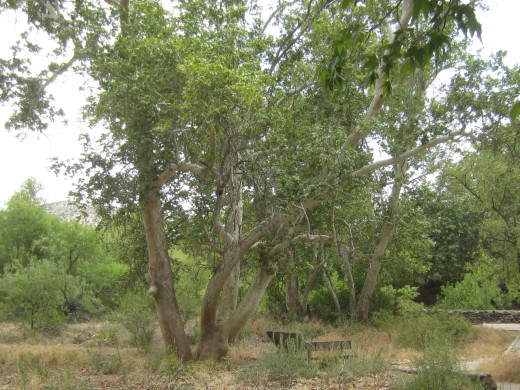
While there are some other Federal areas, like Montezuma Castle, that can be visited with a short detour, other sites, such as national forests as well as some national parks and monuments, which the road on which you are traveling to your destination takes you through.
There is no charge to drive through such areas, but there often is a fine if a ranger passes by and you do not have a pass displayed on your car's dashboard. Not only are such stops usually unplanned by tourists but, even if planned, finding the place (if there is one) to purchase a pass can be a time consuming challenge.
An annual pass solves this problem.
Castle A Ruins
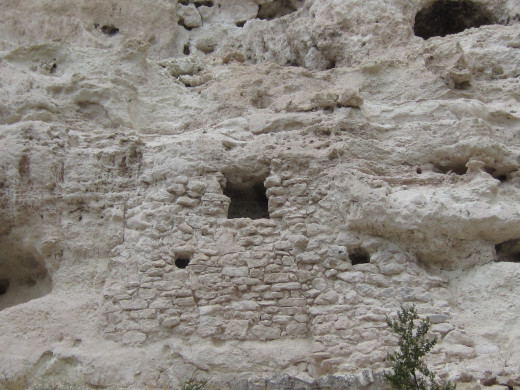
This content is accurate and true to the best of the author’s knowledge and is not meant to substitute for formal and individualized advice from a qualified professional.
© 2014 Chuck Nugent

